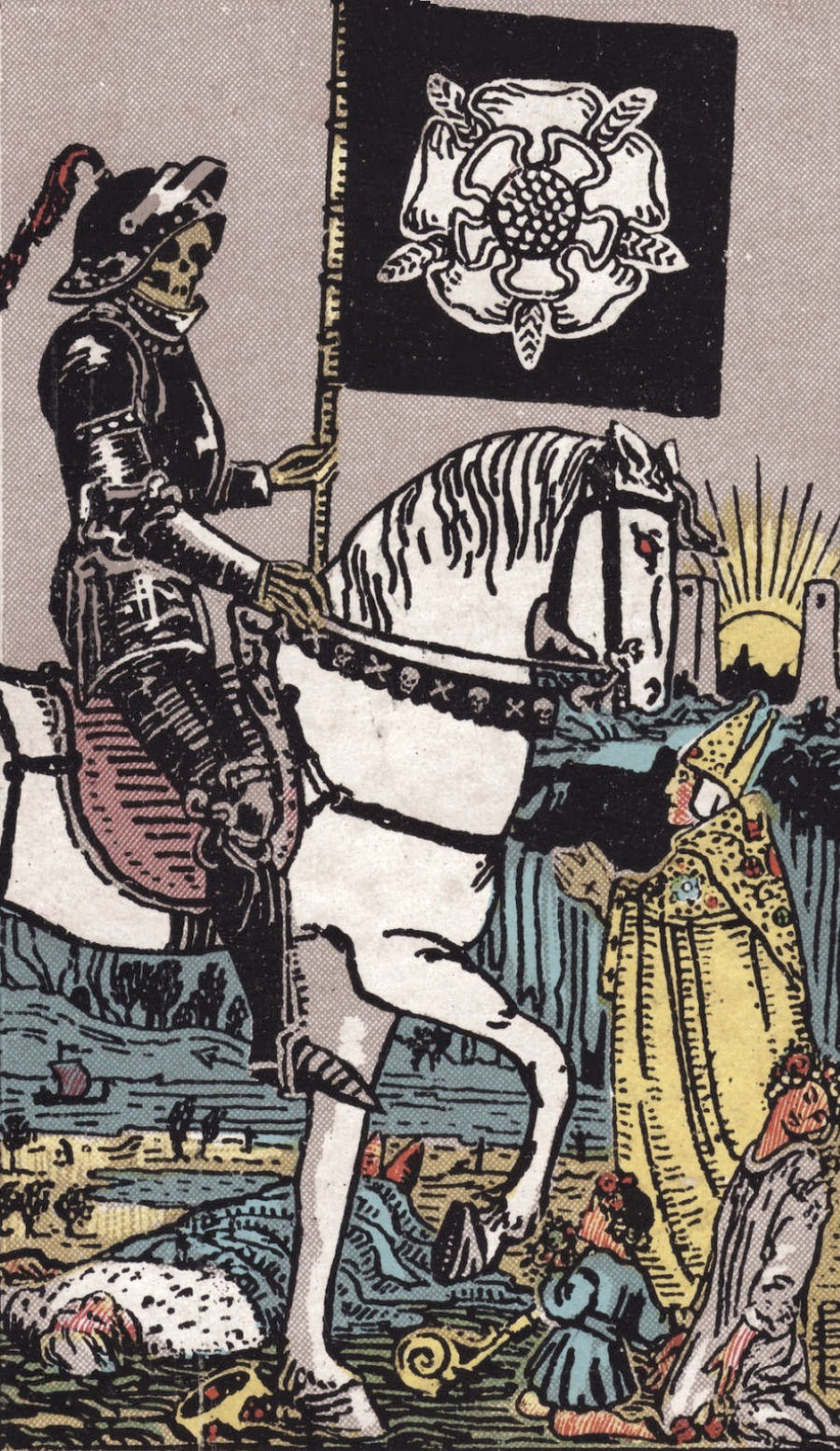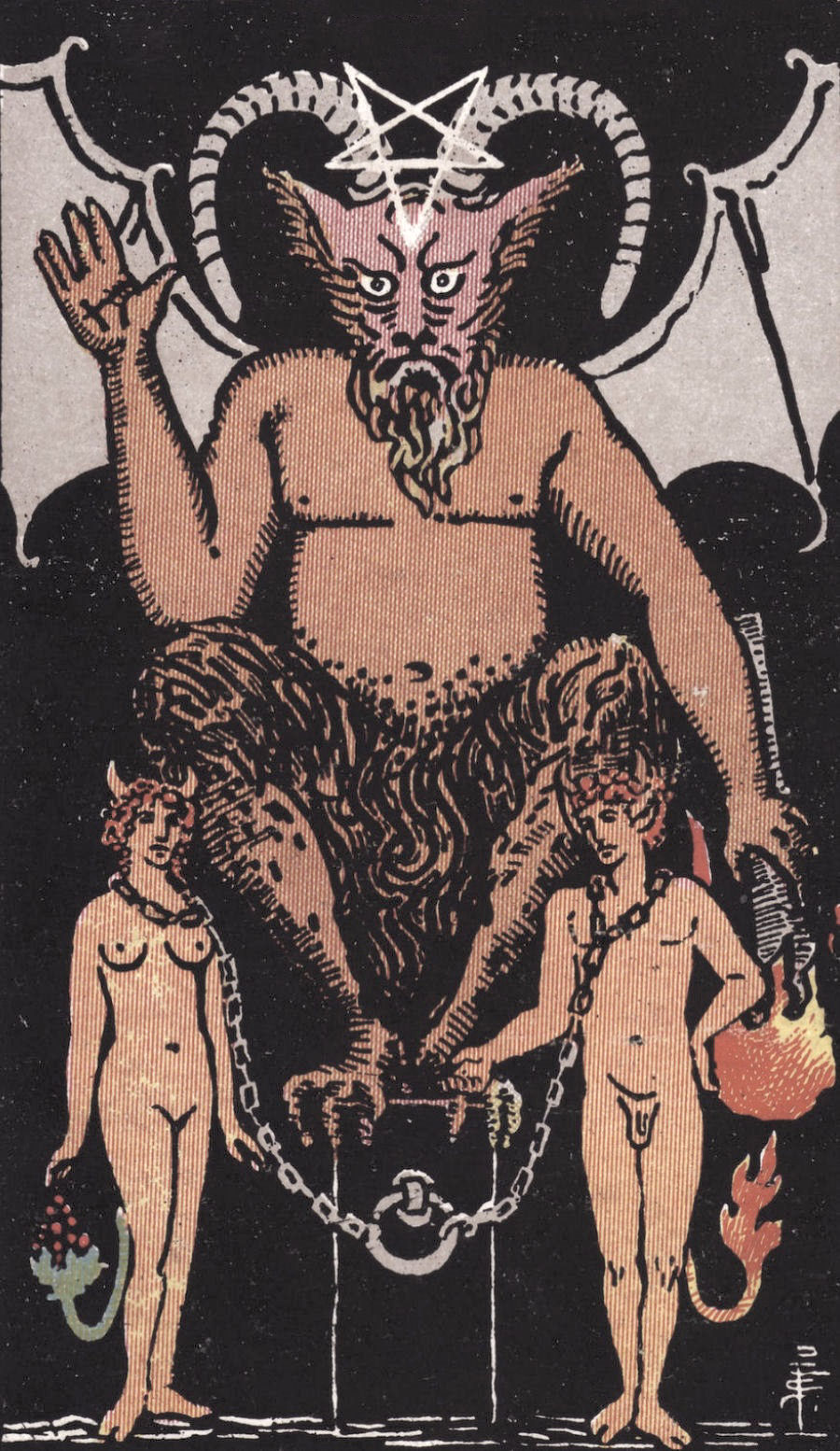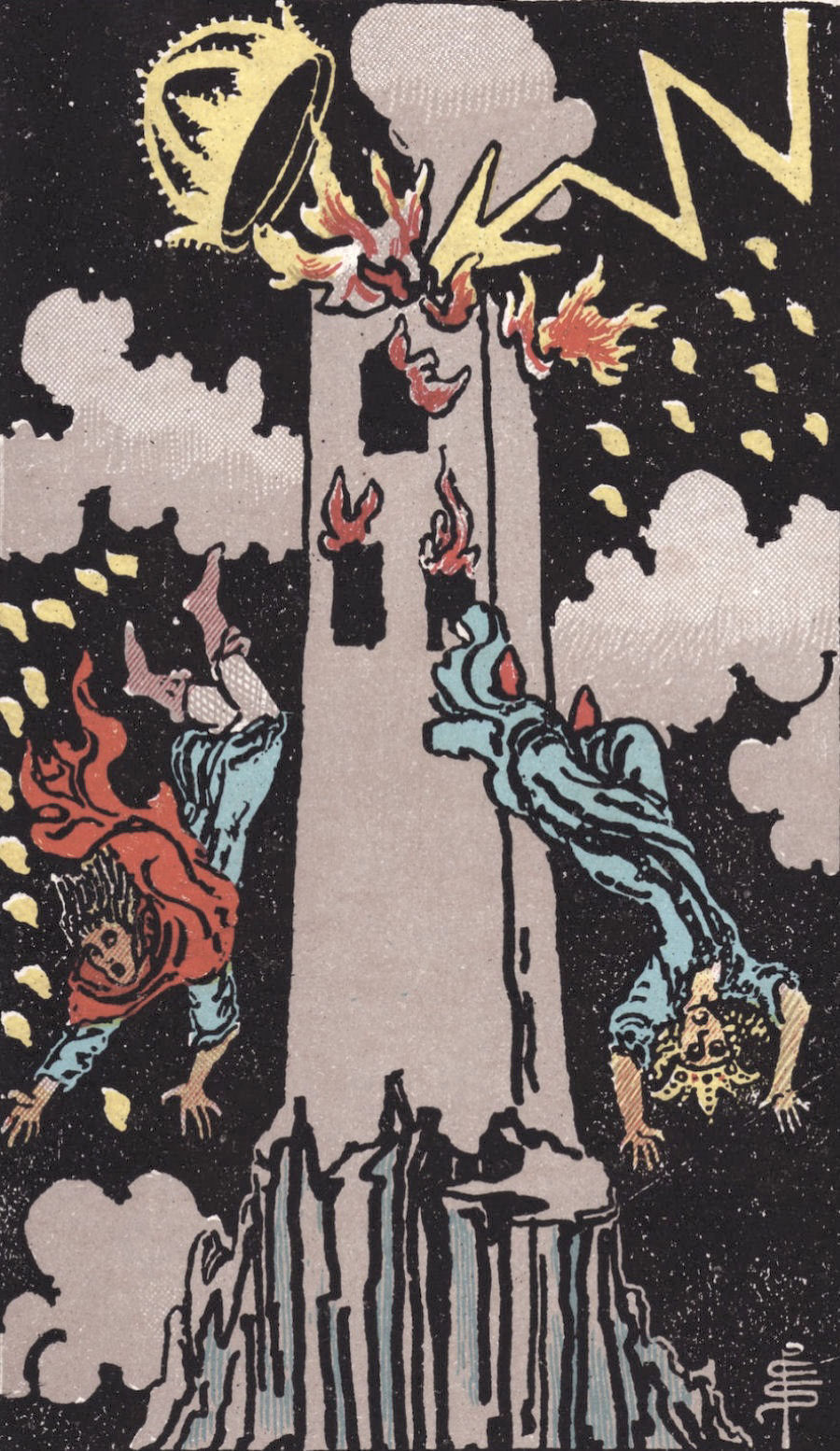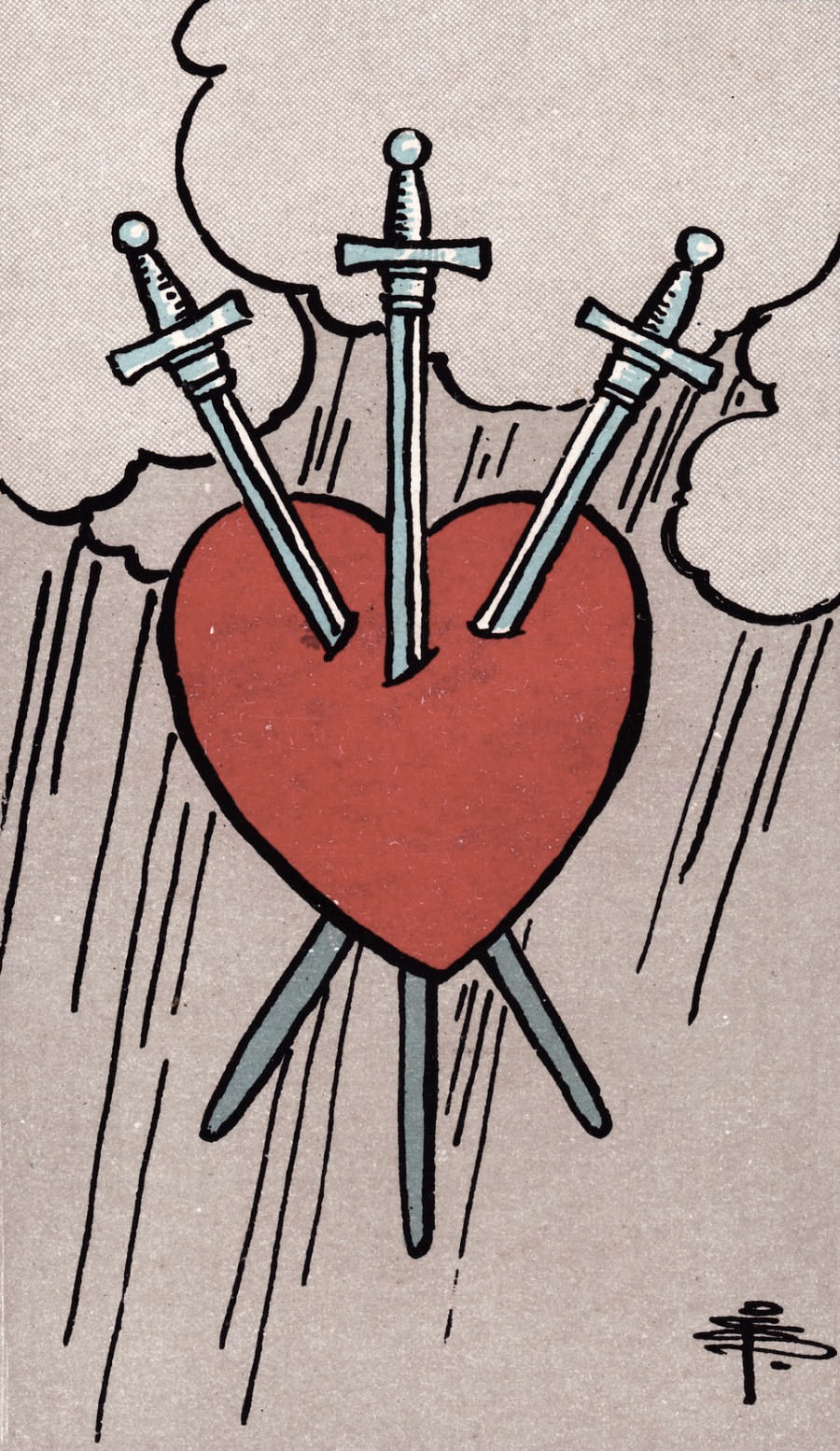What to Do When a Card Just Doesn't Make Sense
We've all been there before. You've laid out a big, beautiful reading and things are flowing along smoothly. All the cards seem to be telling a wonderful and cohesive story, connecting easily to each other and forming illuminating patterns. And then it happens.
One card just. doesn't. make. sense. The ease and rhythm of your reading is completely thrown off. Where the words once came easily now there's... nothing. What do you do?
This scenario fills a lot of us with fear. Why isn't this card behaving? What can't we see? Why aren't we able to pull on our knowledge to make things clear?
We've all been there before. You've laid out a big, beautiful reading and things are flowing along smoothly. All the cards seem to be telling a wonderful and cohesive story, connecting easily to each other and forming illuminating patterns. And then it happens.
One card just. doesn't. make. sense. The ease and rhythm of your reading is completely thrown off. Where the words once came easily now there's... nothing. What do you do?
This scenario fills a lot of us with fear. Why isn't this card behaving? What can't we see? Why aren't we able to pull on our knowledge to make things clear?
These hiccups happen to the best of us, no matter how much memorizing and practicing we do. But before you despair, I'd like to invite you to reframe the situation a little bit.
What if the card throwing you off is trying to tell you something important, something different? What if it's being tricky for a reason?
In my personal practice, I've found that these cards are a quick check on our ego as well as a gateway into a deeper facet of a situation. Their meaning isn't instantly clear because it requires some more work and finesse to get to the core message. As with most things, the hard work is usually worth it.
But back to that flustering, out-of-sync moment. I don't want to gloss over how unnerving it can be to find yourself at a loss for words, especially when you're reading for another person. (Sometimes, drawing a blank on a tarot card can also be as simple as a matter of stage fright.) Below I've compiled some tips for how to move beyond this moment, whether it's a matter of forgetting, nervousness, or simply being at a loss for how the card connects to the larger reading.
I hope these are helpful as you navigate similar situations. And above all, remember to breathe, be kind to yourself, and take these moments as invitations to dive deeper into the cards.
How to Deal with Confusing Tarot Cards
Take a Moment to Center - Before you move into a state of panic, take a quick breath or two to reconnect with yourself and the present moment. Remember, the stakes aren't high, and a tarot reading is as much an exploration as it is a message. Being in-control and certain 100% doesn't make for nuanced, illuminating, and intuitive readings!
Ask the Card What it Means - Look deeper into the card without consulting the rest of the reading to delve into its nuances. Let the rest of the cards fall to the wayside and imagine that you're doing a reading on the same question with just one card and voila! you've drawn your problem card. What message does it portray when viewed alone? Let your intuition lead the way and reintroduce the rest of the cards when you feel confident.
Start by Describing the Card - This technique is an oldie and a goodie and is especially helpful when reading for another person. Begin by describing the card out loud. For example, with the Four of Cups you might say, "A person is sitting beneath a tree with their arms crossed, gazing at three cups. They look bored and detached..." This exercise helps bring up any meanings and associations you may have forgotten in the heat of the moment and brings you back into the flow of the reading.
Explore Why it's Different - Take a closer look at the card. Is it making you draw a blank because it doesn't fit in with the rest of the reading? If so, look at how it differs from the rest. Could it be a warning? A new direction to move towards? A helpful attitude to embrace? In this case, the card's difficulty can point towards its meaning.
Check-In with Biases, Fears, and Resistances - Is there something about this card that puts you on edge? It could simply be a card you don't resonate with naturally or one that brings up bad memories and incompatible concepts. (I'm thinking authoritarian cards like The Emperor or cataclysmic ones like The Tower) Bring all these associations into your mind and then let them go. Swipe them to the side! Say goodbye! See what the card says to you without all this baggage. Is there a new message or meaning that's now visible?
Draw a Clarifying Card - I like to use this as a last resort, since it's easy to go overboard. This technique is helpful in situations where the tricky card seems to be missing information or only telling part of a story. Limit yourself to one card and place it next to the card that's giving you trouble. It's meaning is solely to illuminate more about the first card. Let the two form a dialogue and fill in any gaps of your understanding.
Accept the Unknown - If, after you've tried the steps above, the card is still being resistant, give it some time. I've found that in these cases the card needs extra time and space to reveal its meaning. Usually it unfolds in quite a memorable way, so be patient and see what arises as you go about your normal life. This is just another part of tarot's mysterious nature. Similarly, you can now look to this card for inspiration in your future actions. How might you act to better understand the perspective or message of the card you drew?
I hope these techniques help you when you find yourself with a card that just doesn't make sense. Above all, don't worry too much - this happens to the best of us, so welcome to the club! If anything, these cards are reminders that there's always something new to experience with the cards.
How about you? What has your experience been with tricky cards? Do you have any techniques that help you through these moments? Please share in the comments below!
Dealing with Difficult Tarot Cards: 7 Tips for Reading for Others
At our last Tarot Club meeting we had a nice chat about how to handle the tougher cards when reading for others. Is putting a positive spin on them simply sugar-coating the message? What about when someone is already nervous about tarot? How do you explain The Devil in a "something to look forward to" position in a spread?
These are all rich and meaty questions that each deserve their own post. For today, I'll be diving into the issue of using positive interpretations for these darker cards.
Before we jump on in, a moment to clarify. When I say "darker cards" I'm referring to the heavy hitters in tarot, the cards most likely to pop up on a massively stereotypical fortuneteller's table in a horror movie: Death, The Devil, The Tower, and the Three of Swords. I mean, just take a gander at these beauties!
Right off the bat we can see similarities. A predilection for ominous black or flat grey, intense imagery you could easily imagine on the cover of a death metal album, and visual themes of suffering. No wonder those new to tarot get squeamish around these cards!
And yet would you be surprised if I told you that these are some of my favorite cards in the deck? Without the darker tarot cards the system itself would lack nuance and depth. Tarot is a beautiful illustration of all the facets of life, good and bad. And I say "good and bad" as a jumping off point - tarot is much more subtle than a simple binary; though it uses them to illustrate certain points it also invites us to shade in all the tones of grey that make up most of our human experiences. Sugarcoating them strips away their beautiful complexity and power to reflect our lives in their entirety.
And yet it's a fine line to walk: how do we breach the complex messages of these cards when reading for friends, acquantances, or people new to tarot?
Tips for Interpreting "Negative" Tarot Cards
1. Acknowledge Change
No one card shows a static situation. Life is constantly changing, and we are constantly changing, so no one is going to get stuck experiencing the stabby heartbreak of the Three of Swords forever (that would take some serious willpower!) I think a lot of the fear around tarot is that the cards will show you something bad that you're powerless to change. On the contrary, tarot shows us what energy and happenings are circulating in our lives. It's a map we can look at, interpret, and then choose how to navigate.
2. Cut to the Chase
So you're at a party and have decided to read cards for a few friends. You flip them all over and the second to last card is Death. Instead of going in order while your friend is nervously fixated on a tarot card that literally says "death" on it, wondering if it means she's going to die, jump stright to it with a quick explanation. "You've probably noticed this scary looking skeleton on horseback that says "Death" underneath. Don't worry, tarot is a rich symbolic system and this card doesn't mean you're going to die tomorrow! It can actually be quite beautiful - we'll get to it soon, but in the meantime do you have any questions about it?" (Note: you can use much more elegant language that I do here!)This method takes some of the anxiety out of the situation and diffuses tension so that the querent can be present during their reading.
3. Explain the Context
All tarot cards have their positive and negative sides and their strengths and weaknesses. The large part of a tarot reading lies in each card's relationships to the others in the spread. Context is key. So Death with the Three of Swords could represent a painful but necessary breakup, or The Tower followed by the Six of Wands could show an unexpected, drastic change clearing way for a creative breakthrough. Tying the more challenging cards to others in the spread is a wonderful way to acquaint your querent with the situation and allow them to see their more detailed meanings unfold.
4. Let the Querent Lead
I see tarot as a collaborative process, so the experience and interpretation of whomever you're reading for is an essential. Give your querent an opportunity to share their response and connections with the difficult card after you've given a brief explanation of meaning and context. Does it resonate for them? Let them lead the interpretation here and listen actively. This is a key step for those kind souls who might be tempted to sugarcoat too much in an effort to shield their querent from difficult emotions or situations. Many people actually find it relieving and healing to see tougher situations in their readings. They feel seen and empowered to survey the land and decide how they want to proceed. Giving them the space to decide whether they want to dive deeper into a card or not will both give them the reading they need in the moment and allow you to respond accordingly.
5. Focus on Choice
As I mentioned above, a tarot reading isn't an indictment on your future. It shows the energy active in the current situation and the likely outcome if we proceed as we are right now. If anything, tarot readings give us insight into the many paths we can take. Each card has guidance to offer (yes, even The Tower) and it all rests on how we choose to work with its energy. This is exciting news! Sharing the power of choice and the different avenues available with your querent is a beautiful way to bring the reading home. Returning to the issue of sugar-coating, this is an excellent way to balance the painful aspects of a card with ways to heal. For example, say The Tower appears in a past position, representing an unexpected layoff. It's important here to acknowledge the trauma of this experience. The Tower isn't a walk in the park, that's for sure. Again, let the querent guide you. Additionally, The Tower depicts a situation where structure has crumbled due to an outside force. The querent had no control over the sitution; the only thing they can control is how they emerge from the aftermath. Do they want to rebuild the tower? Build something else? Or pursue another path that's less structured? Leaving the querent with these options is both validating and empowering.
6. Relinquish Control
When we read tarot for others we're equal parts interpreter and conduit. Worrying about how others will interpret things is an expression of our egos. Are we worried we'll offend someone? Look stupid? Refocusing on the cards and their message helps alleviate these anxieties. What is the message of The Devil if we strip away our own nervousness? Let the cards guide the reading and reenvision yourself as a true tarot reader.
7. Focus on Respect
It's essential to center our readings around the mission of offering insight and empowerment. Furthermore, tarot readings should be done with respect for the autonomy and competence of the querent. There's nothing in a tarot reading that could completely undo the querent unless we're reading unethically or phrasing our reading like a proclamation. Trust that the message in the cards will resonate as it needs to with whomever you're reading for. And trust that they are competent people able to care for themselves. We've all weathered heartbreak and misfortune. It may hurt, but it makes us stronger and more experienced. What better way to engage with these sticky subjects than with a trusted friend or tarot reader, looking over an array of insightful cards?
How about you? How have you worked with these darker cards in readings for others? Share your comments below...




























We’re using a different deck than normal this week, for no other reason that that it was the closest to my morning writing spot - nestled in bed under a crisp, white duvet. Our cards have a similar energy, a focus on finding comfort and rest in difficult situations. Because, as you’ve likely noticed, The Tower is starting things off this week. What’s crumbling or has crumbled recently? What is making you tired?